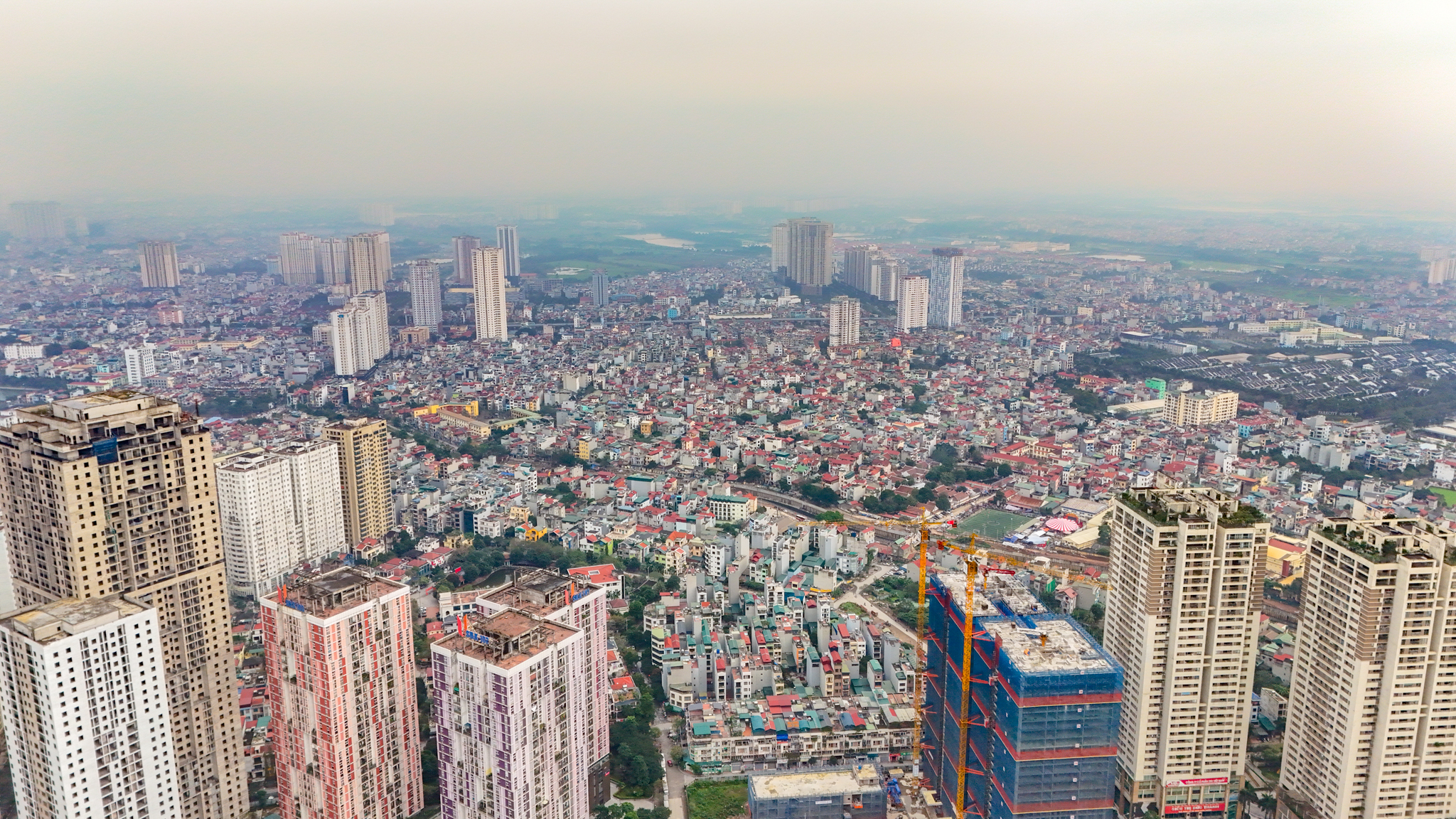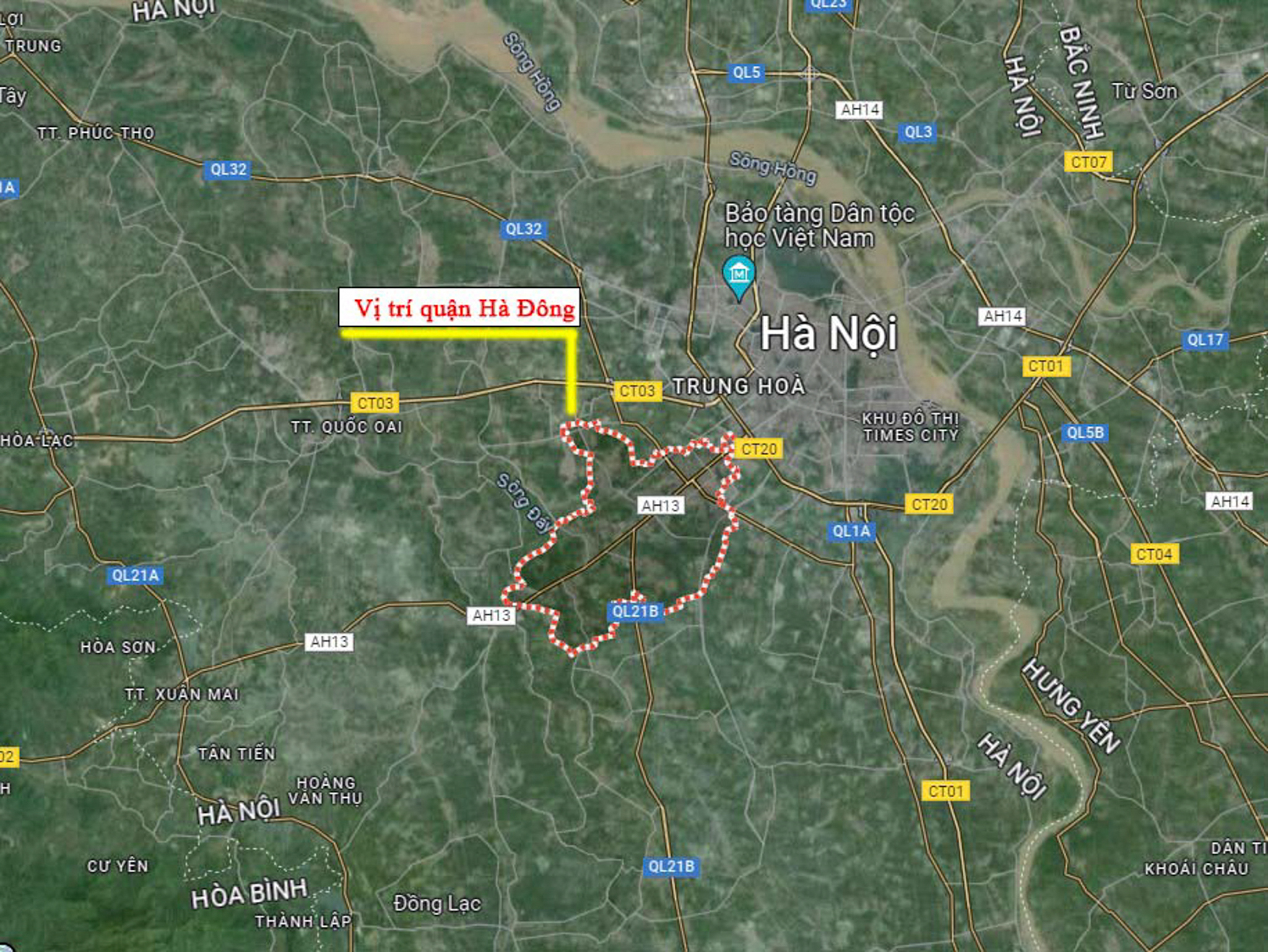
Hà Đông was originally a town in the former province of Hà Tây. In December 2006, Hà Đông was approved to be upgraded from a town to a city under the province of Hà Tây. However, since May 2009, Hà Đông has become a district of Hanoi after Hà Tây was merged into the capital. In the future, there will be more provincial cities that will become districts, such as Huế and Bắc Ninh.

Hà Đông district is located about 13 km southwest of downtown Hanoi, between the Nhuệ River and the Đáy River. Hà Đông covers a natural area of about 49 km2 and is divided into 17 wards. The population is approximately 421,000 people (as of December 2020).

After several years of being merged into the capital, Hà Đông district has been undergoing a positive economic restructuring. In 2022, the industrial-construction sector accounted for nearly 51.3% of the economy, while the trade-service-tourism sector accounted for 48.6% and the agricultural sector accounted for only 0.06%. The picture shows Aeon Mall Hà Đông.

Along with the economic structure, the value of non-state production throughout the district in 2022 reached 86,156 billion VND, 17 times higher than when it was newly established in 2009 (5,142 billion VND). Average annual export turnover increased by over 13.2%. The industrial-cottage industry continued to grow steadily, with an average annual value increase of nearly 15.5%. Collective and private enterprises continue to develop.

Hà Đông district has a convenient transportation system, creating favorable conditions for economic and social development. Some important transportation routes include: the railway line from Văn Điển to Ba La to the northern provinces, the elevated railway line Cát Linh – Hà Đông, National Highway 6, National Highway 22 (Road 21B), Lê Trọng Tấn Street, Tố Hữu Street, etc. The picture shows Yên Nghĩa Station, the terminal of the Cát Linh – Hà Đông elevated railway, along with Yên Nghĩa Bus Station.

Hà Đông district is currently constructing many new roads. One notable project is the Belt Road 4 – Hanoi Capital Region project, with an investment of up to 86,000 billion VND. The section passing through Hà Đông has a length of about 5.5 km. After months of construction, the framework of the road has been formed.

In addition, to improve the quality and value of production and business, Hà Đông district has focused on innovation and improving product quality to increase the income of the local residents. Just from 2008 to 2022, the average per capita income of the district increased from 46 million VND to 82.7 million VND. The picture shows Vạn Phúc Silk Village in Hà Đông, one of the most famous silk weaving villages in Vietnam.

In addition, Hà Đông district also has various recreational facilities. In mid-February, Thiên Văn Học Park, with an area of 12 hectares and an investment of 260 billion VND, was opened to the public.

Although it has just opened, the park has attracted a large number of visitors, including children and adults. The areas are always bustling.

Hà Đông is also known for its beautiful places that attract tourists. The picture shows a boulevard with blooming flowers in Park City Hanoi, which many young people visit for photo opportunities.

In 2023, Hà Đông district achieved 27 out of 28 set targets, with 14 targets exceeding the plan. In 2024, the district will focus on urban planning management, construction order management, land management, and land clearance. At the same time, the district will continue to promote economic development, ensure social welfare, and improve the quality of life for the people. The picture shows Dương Nội Urban Area.









































